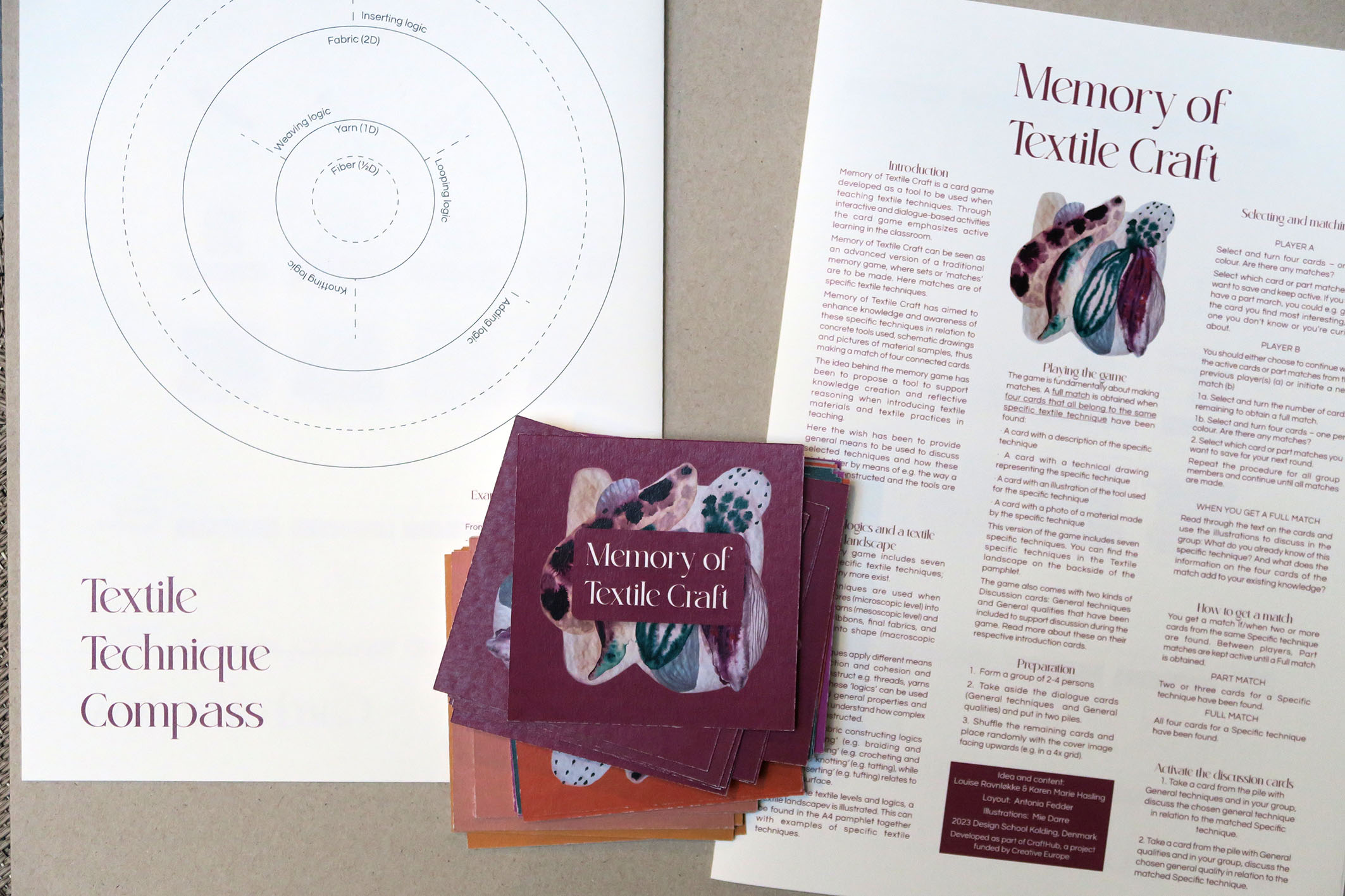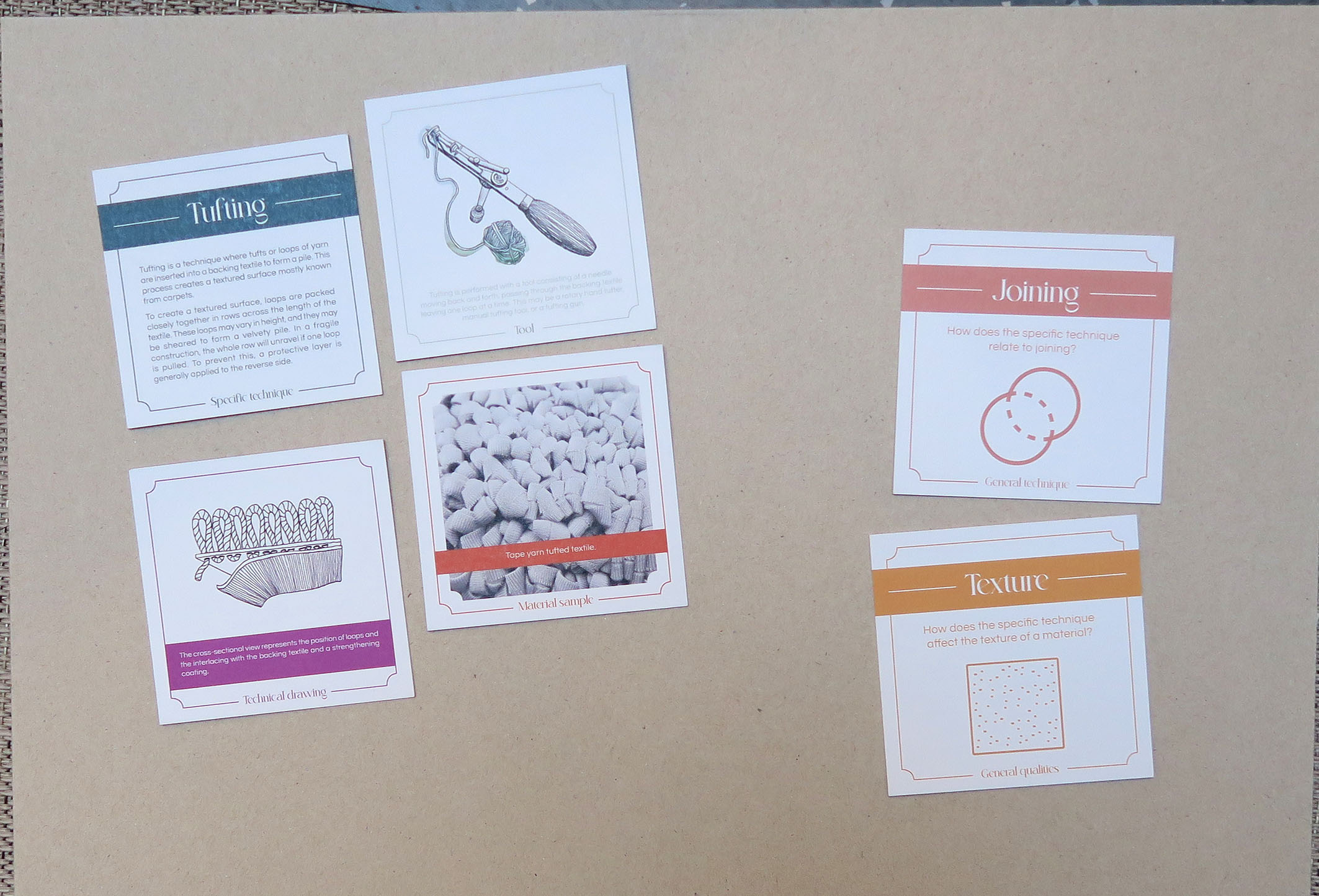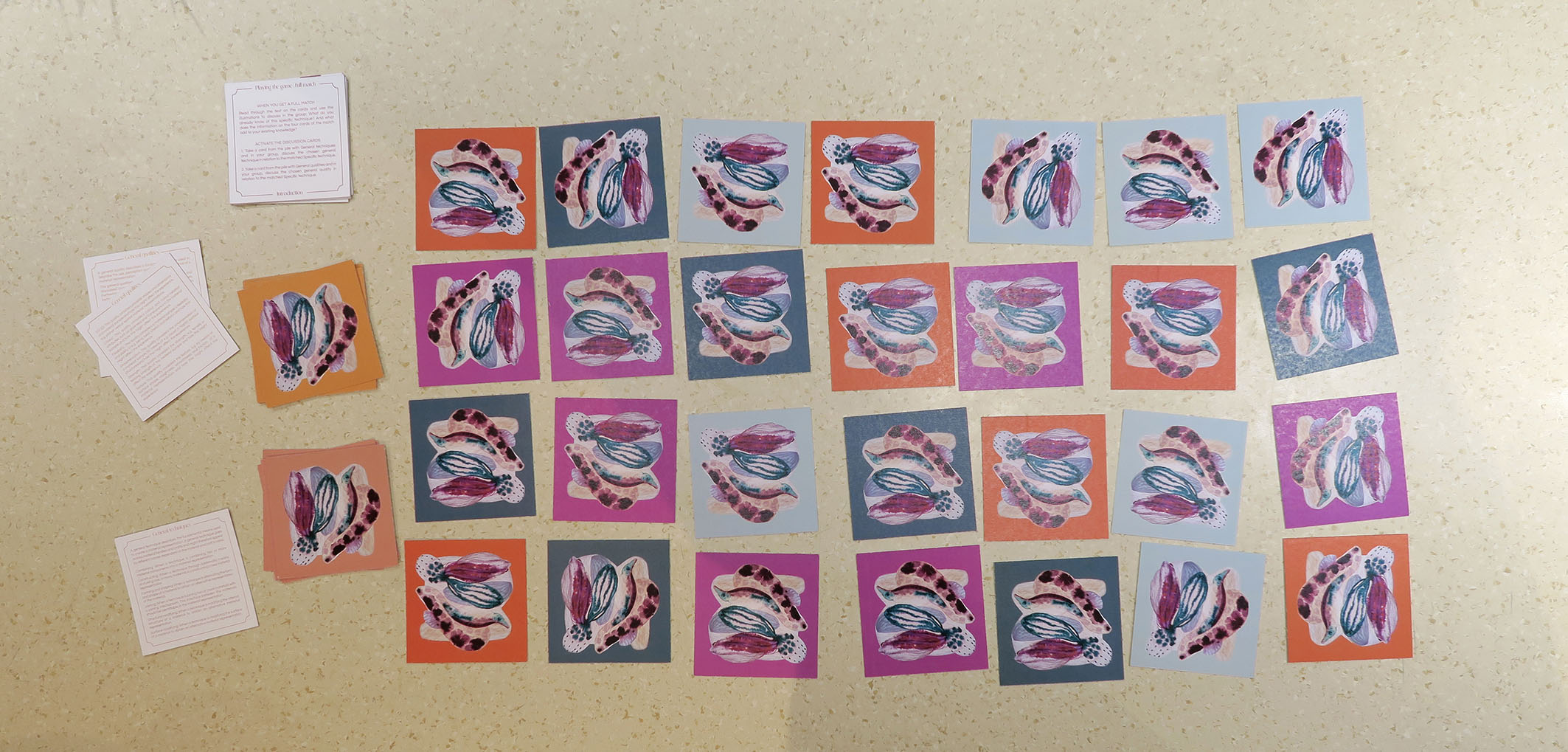Info
Memory of Textile Crafts is a card game developed as a tool to be used when teaching textile techniques. Through interactive and dialogue-based activities the card game emphasizes active learning in the classroom. The game can be seen as an advanced version of a traditional memory game, where sets or ‘matches’ are to be made. Here matches are of specific textile techniques.
The aim of the game is to enhance knowledge and awareness of these specific techniques in relation to concrete tools used, schematic drawings and pictures of material samples, thus making a match of four connected cards.
The memory game includes seven different specific textile techniques; however, many more exist.
Textile techniques are used when translating fibres (microscopic level) into threads and yarns (mesoscopic level) and further into ribbons, final fabrics, and surfaces or into shape (macroscopic level). Textile techniques apply different means to create friction and cohesion and thereby to construct e.g. threads, yarns and fabrics. These ‘logics’ can be used to understand general properties and qualities and to understand how complex textiles are constructed. Ribbon and fabric constructing logics are: ‘interlacing’ (e.g. braiding and weaving), ‘looping’ (e.g. crocheting and knitting) and ‘knotting’ (e.g. tatting), while the logic ‘inserting’ (e.g. tufting) relates to the textile surface. The textile techniques selected for this game represent these different logics.
The idea behind the memory game has been to propose a tool to support knowledge creation and reflective reasoning when introducing textile materials and textile practices in teaching. Here the wish has been to provide general means to be used to discuss selected techniques and how these might differ by means of e.g. the way a textile is constructed and the tools are used.
As a part of the development of the card game, we are now moving into a test phase where we would like tutors and textile practitioners to try Memory of Textile Crafts and help us by assessing their experience. Please reach out if you a curious and want to know more.
Louise and Karen Marie




